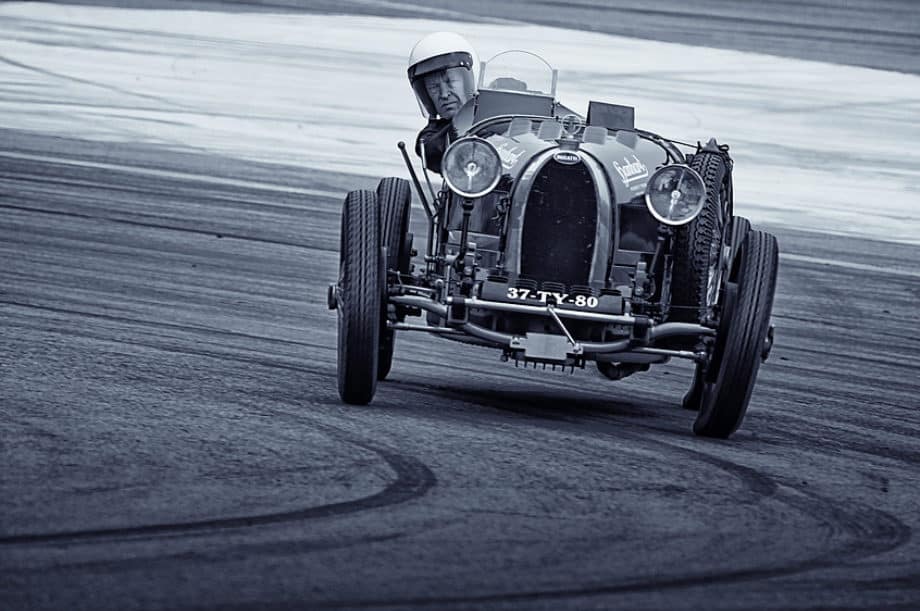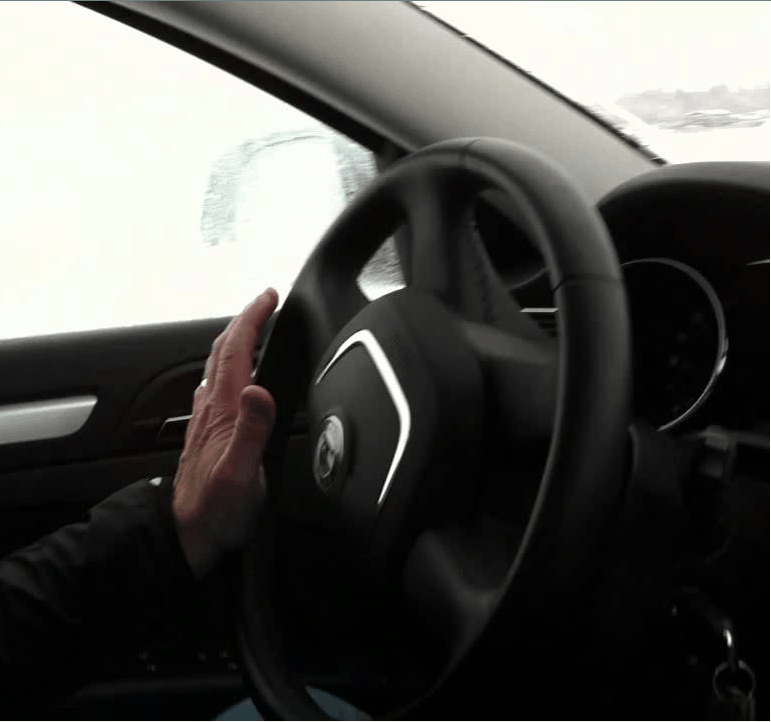Executing A Perfect Handbrake Turn

There are a lot of reasons why a man may need to use the handbrake turn, taking the lead in a race, shaking some pursuers with a last minute turn, or just impressing your passenger while giving them a good scare! Really, any of those 3 could happen to you. I advise that you practice in an empty parking lot so you don’t damage your car should you mess up.
The approach
A surface with low friction is going to be best as it’s easier to get your back wheels to lose traction and whip around. As a teenager in the northern United States, the first snows of the year almost always saw my friends and me in empty parking lots; even a wet surface will make it considerably easier. The less traction, the slower you should go, If you go too fast you’ll just spin around.
On dry pavement, 30mph is probably going to be about right. As you get close to the turn let off the gas, the deceleration will transfer weight (and traction) from the back tires to the front ones.
Steering
 You’re going to need to make a long and fluid turn; everyone had their systems for this. One was to hold the wheel at 1 and 7 (if you’re turning right in an American car). I found these to be overly complicated and required too much forethought, making it harder to use your intuition. Put one hand on the wheel at 12 o’clock. Don’t grip it, push your palm up against it. This will allow your hand to follow the wheel all the way around and back without having to let go, it also has the added benefit of leaving your other hand completely free to work the stick and parking brake. When you enter the corner, turn VERY hard. You want to apex halfway around.
You’re going to need to make a long and fluid turn; everyone had their systems for this. One was to hold the wheel at 1 and 7 (if you’re turning right in an American car). I found these to be overly complicated and required too much forethought, making it harder to use your intuition. Put one hand on the wheel at 12 o’clock. Don’t grip it, push your palm up against it. This will allow your hand to follow the wheel all the way around and back without having to let go, it also has the added benefit of leaving your other hand completely free to work the stick and parking brake. When you enter the corner, turn VERY hard. You want to apex halfway around.
Braking
As soon as you enter the turn (not the intersection, the turn), push the clutch in all the way and pull up on your parking brake quickly. You’re going to leave the clutch in until you’re ready to give the tires power again (when you want to pull out of the turn), but you’re only going to give the parking brake what we called “the tap”. You need to keep the button on the brake pressed so it doesn’t engage the ratcheting system. As soon as you feel a little resistance and the back wheels start slipping, that’s your cue to put the parking brake away. If you’re on dry pavement, you may need to hold it a little longer.
The exit
You’ve still got your wheels hard over and you are either pointed in the right direction for your exit or you’re about to be, it’s time to straighten them out. If you used some 7 o’clock and 1 o’clock technique, let the steering wheel go back by keeping a loose grip on it, this will straighten the tires out. Again, the palming technique shines here, if you overshot, you might need to actually turn slightly in the other direction in order to do a good 90-degree turn. If you’re palming, bring the steering wheel back to “noon”, if you’re not pointed in the right direction, just steer in the direction you want to go.
As soon as your hand is back at noon (or wherever you put it to correct for overshooting) Let the clutch back out, and punch the gas. This should pull you out of it, blasting you off in a new direction, and ditching whoever’s on your tail.
Troubleshooting
To review, the order is:
1) Let off the accelerator
2) Turn hard
3) Just a split second after you turn, push the clutch in and tap the parking brake
4) Hold while you turn (this may or may not include the brake, depending on conditions)
5) Steer back out of the turn, let off the clutch and give it some gas
You did a 180: You were going too fast or you held the brake up too long. The faster you are going, the shorter the tap. Likewise, the slower, the longer the tap. You have to learn what your car needs at different speeds.
You didn’t do a full 90-degree turn: You probably need to go in faster, but try holding your tap just a second longer. A slippery surface like fresh snow will require only the shortest of taps, dry pavement will require a longer hold.
You didn’t turn at all, just screeched your tires: You pulled the parking brake too soon, make sure you start to turn before you pull it. If you have an electric parking brake that is operated by a button or little switch, sorry, those won’t work.
Your tires spun out and you couldn’t exit: Try a higher gear during your exit. Lower gears have more torque (and thus acceleration) which can cause them to spin out. A higher gear will have less torque (but also less acceleration). You want the lowest gear possible without spinning the tires. On pavement, 2nd should be good; snow will want 3rd or perhaps even 4th! You can also try giving it just a little gas to start pulling you out and then punch it.
Practice makes perfect, your car will respond differently at different speeds and under different conditions. Learn what she wants and you’ll get the knack in no time!




